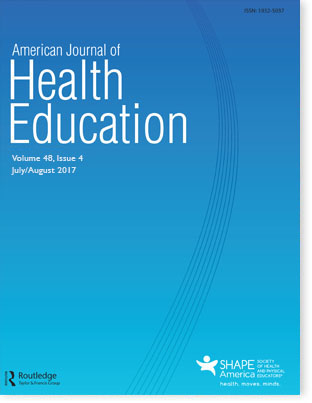 AJHE Table of Contents
AJHE Table of Contents
The Value of College Health Promotion: A Critical Population and Setting for Improving the Public’s Health
Alyssa M. Lederer & Sara B. Oswalt
 College students are an important priority population, and higher education is an opportune setting for chronic disease prevention and health promotion. Yet many people in and outside of the health promotion field believe that public health efforts directed toward college students are trivial compared to work with other populations. In this commentary, we challenge this erroneous perception and address three widespread misconceptions about the value of health promotion in higher education. Our perspective is informed by our experience serving as college health promotion professionals for several years before transitioning to our present faculty roles, which include a focus on college health promotion research.
College students are an important priority population, and higher education is an opportune setting for chronic disease prevention and health promotion. Yet many people in and outside of the health promotion field believe that public health efforts directed toward college students are trivial compared to work with other populations. In this commentary, we challenge this erroneous perception and address three widespread misconceptions about the value of health promotion in higher education. Our perspective is informed by our experience serving as college health promotion professionals for several years before transitioning to our present faculty roles, which include a focus on college health promotion research.
Misconception 1: College students are privileged. They do not reflect most of the US population
College students in fact represent a large portion of the US population. There are over 20 million students enrolled at degree-granting post-secondary institutions in the United States. Approximately 12 million are 40 under the age of 25, representing 40% of the overall US population of 18- to 24-years-olds. The collegiate population is increasingly becoming a microcosm of American society. Forty-two percent of college students are people of color, 20% are above the age of 30, 62% work part-time or full-time, 39% receive Pell grants (based on low income levels), and 28% have children. The notion of the archetypical college student is becoming a thing of the past, with college students who have historically been referred to as “nontraditional” steadily becoming the norm.
Misconception 2: Misconception 2: College students are generally healthy
Education is a known determinant of future health status, but this does not negate the fact that college students struggle with numerous and complex health issues. The American College Health Association– National College Health Assessment II (ACHANCHA II), a national survey of college students in which hundreds of institutions have participated, has consistently found that college students experience health problems that impact their well-being when they are in college and contribute to later chronic disease. For example, college students have high rates of substance use and mental health concerns, and few students meet national nutrition and physical activity guidelines.
To read the rest of this article,
click here to download a pdf.